Understanding Tarot Card Reading Formations
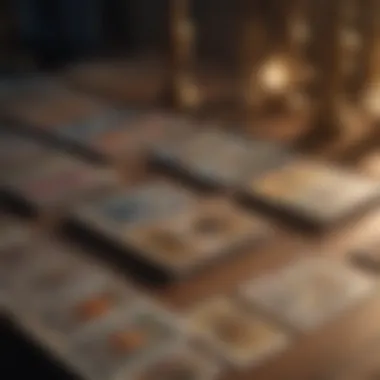
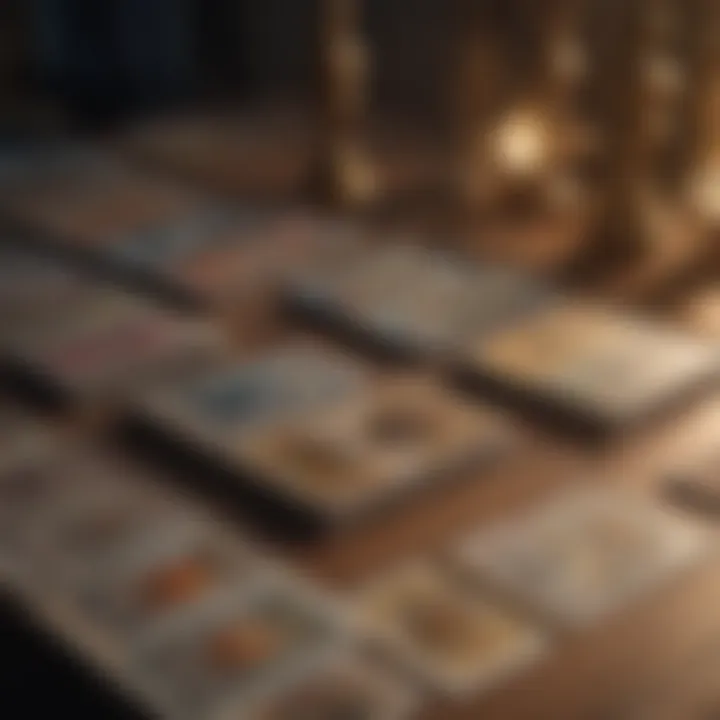
Intro
Tarot card reading is a fascinating art that intertwines intuition, symbolism, and storytelling. As card practitioners dive into this ancient methodology, they often encounter various formations that structure the readings. These formations do not just serve as a layout on the table; they carry deep interpretative value and can shape the narrative of the reading significantly.
The journey ahead will examine several key aspects of tarot card formations. We will unfold the purpose behind each layout, showcasing how practitioners can weave these structures into their readings to gain comprehensive insights. By understanding the nuances of these formations, tarot readers can elevate their practice, whether you're a seasoned expert or a curious novice.
Each section will further explore different layouts and the storytelling possibilities they introduce. By the end of this exploration, the reader will be well-equipped with knowledge to approach tarot card readings in a more informed and insightful manner.
Understanding Tarot Formations
Overview of Common Layouts
The world of tarot is rich with various layouts used during readings, each with its own flair and goal. From the classic three-card spread to more complex arrangements like the Celtic Cross, these formations establish a framework that guides the interpretation of the cards.
Some popular formations include:
- Three-Card Spread: Offers quick insights into past, present, and future.
- Celtic Cross: A deeper exploration of the querent's current situation and challenges.
- Relationship Spread: Focuses on interpersonal dynamics and compatibility.
Each layout comes with its set of instructions and intended outcomes, allowing readers to tailor their approach based on the situation or query.
Structural Significance
Not all spreads are created equal, and the structure of a formation can change the reading's depth. A well-structured spread organizes the cards in a way that promotes a fluent story.
For instance, the placement of cards in the Celtic Cross guides the reader through various aspects of the querent's situation and helps identify core issues. Each position within the spread holds specific meanings, granting a clear direction to the narrative.
- Position 1: Represents the heart of the matter.
- Position 2: Influences affecting the situation.
- Position 3: External influences.
Overall, understanding the structural significance of tarot formations invites deeper reflection on the querent’s experiences and challenges.
Interpretive Value
The true magic of tarot comes from how each formation augments the interpretive value of the cards drawn. Colors, symbols, and even card imagery can resonate differently based on their layout.
Consider the impact of card proximity and placements. A card interpreted as a challenge on its own might transform into a sign of growth when positioned next to a supportive card. Here lies a nuanced layer to readings that astute readers can capitalize on.
Synthesizing the Insights
Collating insights garnered from the understanding of tarot formations allows practitioners to approach their readings with renewed vigor. It combines structural knowledge with interpretive skills, enhancing both the accuracy and the relevance of readings.
Reflecting on pre-existing layouts and adapting them to suit a current read can be beneficial:
- Remain attentive to how each card's meaning shifts in context.
- Make notes on how various layouts influence your thought process.
- Regularly engage with different card spreads to flex your interpretive muscle.
In doing so, tarot readers can continuously evolve their practice, ensuring readings remain fresh and insightful. By diving deep into these formations, we gain a more robust toolkit for navigating the intricate dance of tarot reading.
Understanding Tarot Card Formations
Tarot card formations are much more than mere layouts; they represent a structured approach to divining answers, revealing nuances about the subject at hand. Understanding how these formations work is crucial for anyone eager to delve into tarot reading or for those looking to deepen their existing practice. By grasping the various formations and their underlying principles, practitioners can enhance their interpretations and provide more meaningful insights.
Why does this matter? For starters, tarot card formations can often be the backbone of a reading. They serve as the framework that anchors the cards in context, allowing the reader to navigate through the complexities of each spread. Each formation possesses its own character, reflecting different aspects of life—be it relationships, careers, or personal growth. Understanding these different perspectives is invaluable.
Moreover, familiarizing oneself with tarot formations can, remarkably, streamline the reading process. Rather than feeling overwhelmed by the multitude of cards, having a clear layout can help pinpoint focus areas. It’s like having a map in uncharted territory; it directs the interpretation and can steer the reader toward significant insights that might otherwise slip through the cracks.
A few other elements to consider include:
- Interpretive Relevance: Each formation aids in drawing connections between the cards, highlighting specific themes or patterns.
- Personalization: Readers can adapt formations based on individual circumstances, tailoring the reading process to suit diverse needs.
- Intuitive Development: Regular utilization of these structures fosters intuition, enabling readers to better interpret the subtleties of the cards.
In sum, comprehending tarot card formations provides a solid foundation that can significantly enhance a reader’s experience and effectiveness, fostering a deeper journey into the intricate world of tarot.
What Are Tarot Card Formations?
At its essence, a tarot card formation is the strategic arrangement of tarot cards, utilized to gain insights into a specific question or circumstance. It's common to associate tarot formations with pre-defined layouts, but they can also be highly customizable based on the reader’s intent. Consider this: when you pull a card, what does it signify on its own? Now, how does that meaning shift when placed next to other cards? The positioning becomes a crucial layer in interpretation.
Formation types range from universally recognized layouts like the Three-Card Spread or Celtic Cross Formation to more personalized sets provided by experienced readers. Each card's position within the formation carries unique meanings, intertwining with those of the adjoining cards, ultimately creating a tapestry of insights that can reveal the profound wisdom of the tarot.
These formations assist in bringing clarity to the chaotic array of information the cards can present, allowing readers to dive deeper into the specific nuances that address inquiries on love, career, or personal challenge. For example, in the popular Three-Card Spread, the placement of each card might represent past influences, present situations, and potential future outcomes, showcasing the flow of time and circumstance.
Historical Context of Tarot
To fully appreciate tarot card formations, it helps to have some background on their historical evolution. Tarot has roots that stretch back to the 15th century, originating in Europe as a card game called tarocchi. Over the centuries, these cards evolved from mere entertainment to a spiritual tool embraced by mystics and esoteric practitioners.
Initially, tarot wasn’t designed for divination. However, as time went on, especially during the 18th century, interpretations began to link man’s experiences with metaphysical insights. The images on the cards, rich with symbolism, became conduits for accessing deeper wisdom.
This historical shift contributed to the popularization of various card formations today. Early decks featured stark differences, each culture embedding its interpretations within the formations used. For instance, the Tarot de Marseille emphasized a more straightforward approach while the Rider-Waite deck introduced more intricate imagery and symbolism. Each formation utilized in present-day readings is, in a sense, a continuation of these rich historical traditions, blending age-old wisdom with personal and contemporary interpretations.
Understanding this historical context aids in grasping the significance behind each formation, as well as the evolution of meanings that can enrich the reading experience.
Common Tarot Formations and Their Meanings
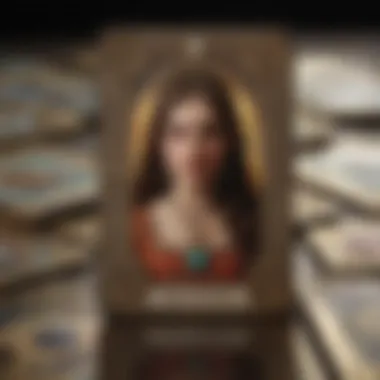
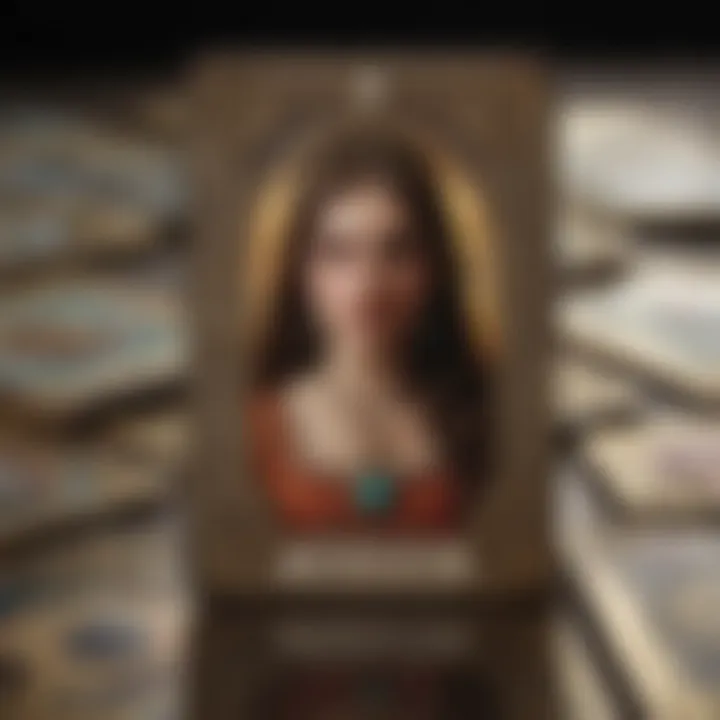
Understanding common tarot formations is vital for anyone delving into this mystical art. These formations, often referred to as spreads, guide practitioners in interpreting the symbolism of the cards laid before them. Knowing the structure of each spread isn't just beneficial; it’s essential for drawing out nuanced meanings and insights. Each formation serves different needs, whether that’s exploring the past, understanding the present, or gaining clarity on future prospects. Observing how various spreads interact with diverse questions can illuminate the art of tarot reading itself.
Three-Card Spread
Past-Present-Future Interpretation
The Past-Present-Future interpretation of the three-card spread allows readers to assess situations in a straightforward manner. It illuminates a continuum that helps make sense of where one’s path has come from, where it stands now, and where it might lead. This technique is favored for its simplicity and speed; it doesn’t require extensive familiarity with the cards, yet enables deep insights into one's life cycle.
The key characteristic of this approach is its linear progression. Each card embodies a segment of time, connecting experiences to current choices and future possibilities. The unique feature of the Past-Present-Future spread lies in its capacity to highlight patterns over time, thereby revealing personal growth or recurring challenges.
However, while it's incredibly user-friendly, it can sometimes oversimplify complex situations. It’s essential for readers to not overlook the nuances of life that might be lost in a linear interpretation.
Decision-Making Aid
Using the three-card spread as a decision-making aid is another brilliant way to tap into its potential. By focusing on choices at hand, a reader can use the cards to represent options or outcomes. Here, each card can symbolize a different path, highlighting the pros and cons associated with each choice. This is especially effective when indecision is clouding one's judgment.
The key characteristic here is its practical application — it’s not just about understanding one's fate but actively participating in shaping it. What's unique about this aid is that it aligns the mind's rational pathways with intuitive insights, merging logic with intuition seamlessly.
However, there is a pitfall: reliance on the cards alone can hinder personal responsibility. It’s crucial to remember that tarot should guide, not dictate, your decisions.
Celtic Cross Formation
Comprehensive Analysis
The Celtic Cross formation is famed for providing deep insights into complex situations. It’s often regarded as a classic, laying out a comprehensive picture that delves into the intricacies of whatever questions are posed. As readers journey through this spread, they can peel back the layers of ambiguity surrounding circumstances.
Its key characteristic is the thoroughness with which it addresses multiple dimensions of a situation. Unlike simpler spreads, the Celtic Cross opens up various aspects, from external influences to aspirational goals, making it a popular choice for those seeking detailed analysis.
What sets this formation apart is its ability to encompass both the internal and external landscapes of an inquiry. However, due to its complexity, it may overwhelm beginners. A solid grasp of each card's meaning is necessary to fully capitalize on its depth.
Understanding Complex Situations
When grappling with complicated situations, the Celtic Cross formation shines as a fountain of clarity. Its design invites readers to examine not just the immediate variables, but also underlying motivations and future implications. Each placement within the cross is purposefully arranged to clarify different aspects of life, from obstacles to support systems.
The main feature of this spread is its layered approach, offering a roadmap through confusion. Its benefit is that it provides a balanced account of all elements involved in a given situation. Nevertheless, this thoroughness can sometimes lead to information overload, where the reader must sift through intricate details. Finding the thread in the weave can be just as important as the information being disseminated.
Relationship Spread
Exploring Connection Dynamics
When examining interpersonal relationships, the relationship spread is invaluable for understanding connection dynamics. This formation typically reveals the underlying energies between two or more people, highlighting strengths, vulnerabilities, and overall chemistry. In essence, it’s like peering through a magnifying glass, spotlighting aspects that often remain unnoticed in daily interactions.
What makes this spread advantageous is its focus on relational nuances. Each card serves as a window into how participants feel and behave within the relationship framework. A unique facet of this spread is that it allows the reader to see potential areas for growth or conflict.
However, a drawback could be that the reader might become too focused on their own perceptions, which could overshadow the authentic feelings of others involved. Balancing personal insights with empathy is critical for truly effective readings.
Compatibility Insights
Exploring compatibility is another aspect of the relationship spread. Practitioners can gain valuable insights into how well two entities resonate with each other. This particularly resonates with those seeking clarity on romantic or professional partnerships. By placing emphasis on harmonious and discordant aspects, readers can see where collaboration thrives and where challenges arise.
One key characteristic of this exploration is its ability to expose contrasting energies; opposites can attract, but they can also clash. The insights gained here often encourage mutual understanding and negotiation. The spread’s unique feature is the way it highlights individual contributions and how they interplay in the overall dynamics.
Nonetheless, compatibility insights shouldn’t be overemphasized as definitive answers. Relationships evolve, and static readings can mislead those trying to understand fluid dynamics over time.
Career Spread
Professional Pathways
The career spread serves as a lens into professional pathways. Tarot readers often utilize this formation to help individuals navigate their work lives, seeking clarity on their current job roles or future ambitions. By laying out cards that reflect various aspects of one's career, the reader can help illuminate directions that might serve long-term fulfillment.
Its key feature is the focus on career-specific inquiries. This spread isn’t just about the mundane aspects of a job; it digs deeper into personal satisfaction, ambition, and potential obstacles. Its distinct advantage is the tailored approach, allowing the reader to gauge how external factors might influence one's professional journey.
However, this focus can sometimes lead to overlooking personal feelings towards one’s job. It's essential to integrate emotional aspects when evaluating one’s career trajectory.
Workplace Challenges
When examining workplace challenges, the career spread adds even greater significance. Readers can address specific obstacles that may hinder progression, from interpersonal conflicts to organizational dynamics. It’s like having a magnifying glass on professional stressors, exposing challenges as well as viable solutions.
The key aspect of this exploration is its relevance to contemporary work life — in a world of ever-shifting job landscapes, being aware of potential pitfalls can prove invaluable. Its unique feature lies in its elucidative nature, exposing hurdles while simultaneously suggesting paths forward.
On the downside, this spread can create an overwhelming feeling of anxiety, especially if bad news comes from the cards. Thus, it’s essential to approach the findings with a mindset geared toward constructive action rather than despair.
In summary, each tarot formation provides a powerful framework for understanding various aspects of life. They are not mere tools for divination; they are intimate guides that illuminate the pathways of existence, helping practitioners navigate their lives more consciously.
Advanced Tarot Card Formations
Advanced tarot card formations represent a deeper plunge into the art of tarot, moving past the basic spreads into more intricate layouts that reveal complex layers of meaning. These formations not only enrich the reading experience but also allow practitioners to tap into a broader spectrum of insights. By employing advanced techniques, one can explore not just the individual interpretations of cards, but also how they interact with each other in a spread. This interconnectedness can lead to a more profound understanding of a querent's situation.
In this section, we will examine two significant advanced formations: the Astrological Tarot Spread and the Karmic Spread. Each of these techniques provides unique benefits and considerations, enhancing the overall effectiveness of tarot readings.
Astrological Tarot Spread
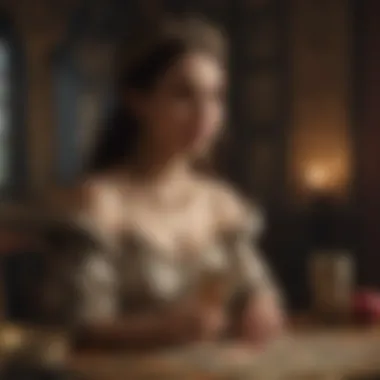
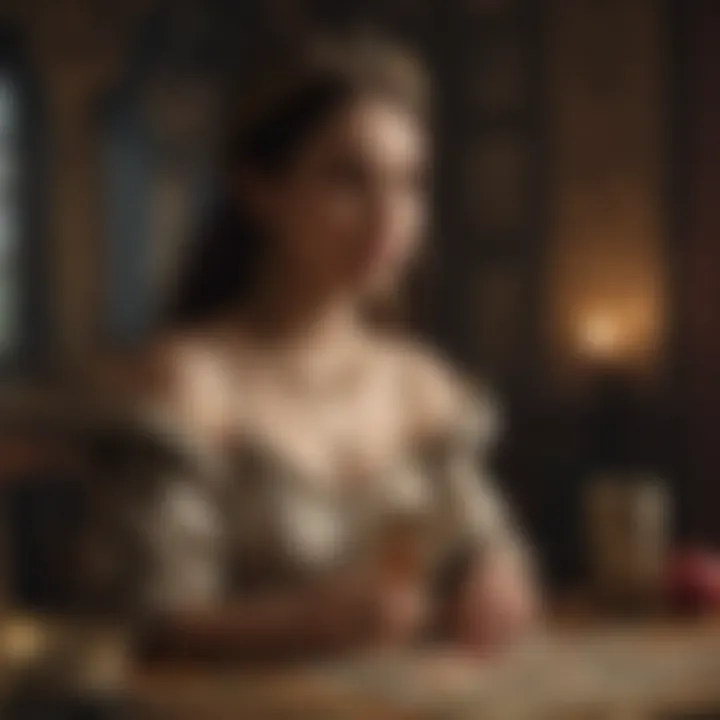
Linking Astrology and Tarot
Linking astrology and tarot forms a synergistic relationship that deepens the interpretive quality of a reading. Both modalities rely on the understanding of energies - astrological influences based on celestial movements and tarot's symbolic interpretations. The integration of astrology into tarot readings allows practitioners to ground their insights within the broader cosmic context, making it an especially potent choice for those interested in spiritual explorations.
The main characteristic of this approach is that it utilizes the unique aspects of one’s astrological chart—such as sun signs, moon phases, and planetary alignments—to inform the reading. This not only personalizes the reading but also connects it to the querent's life's cyclical nature, often pinpointing timing and significant trends. While immensely beneficial, it demands that the reader has a solid understanding of astrology and its terminology, which can be a barrier for some practitioners.
Personalized Insights
Personalized insights derived from the astrological tarot spread are paramount as they tailor the reading to the individual. By factoring in the querent’s astrological details, readers can extract specific insights that resonate with the person’s astrological makeup. This connection allows the reader to highlight particular challenges or opportunities pertinent to the querent's life path, providing clarity during tumultuous times.
One of the unique aspects of personalized insights is the ability for readers to connect not just the meanings of the cards but also their alignment with the querent’s astrological sign and current transits. This dual framework can enhance understanding and bring forth revelation that is deeply personal. However, it is vital that readers remain aware of the potential for over-interpretation, focusing on the essence of what the cards reveal rather than imposing astrological biases.
Karmic Spread
Life Lessons Exploration
The karmic spread invites readers to explore life lessons that may be influencing the querent's journey. This formation delves into the past, present, and potential future circumstances shaped by previous choices, echoing karmic lessons tied to their soul's evolution. By analyzing the cards through the lens of life’s lessons, one can reflect upon patterns that may be serving as obstacles or guides.
What sets this formation apart is its focus on the karmic debts or moral lessons connected to each card's position, offering a chance for healing and growth. This can be incredibly beneficial for individuals who seek to understand their struggles or repetitive cycles in life. Yet, practitioners should tread lightly and ensure that interpretations take into account the querent's readiness to face difficult truths.
Understanding Karmic Patterns
Understanding karmic patterns helps illuminate the complexities of an individual's spiritual journey. By analyzing the interconnectedness of past actions and their present repercussions, readers can identify recurring themes in a querent’s life. This exploration is another vital asset of the karmic spread, allowing for a richer understanding of how past experiences shape current realities.
The key characteristic of recognizing these patterns is that it reveals a roadmap for potential transformation and growth. When employed correctly, the karmic spread can aid querents in gaining insights into their future paths while fostering a deeper sense of awareness regarding their internal and external challenges. However, caution is needed to balance the interpretation—too much focus on karma can lead to fatalism, overlooking the querent's free will.
Integrating advanced tarot formations into your practice can open up new dimensions of insight. By considering the unique layers that these spreads offer, you can significantly enhance the depth of your tarot readings.
Overall, advanced tarot card formations serve as exploratory tools that enrich one’s readings, bringing forth unique insights that traditional spreads may overlook. Whether through astrological connections or karmic lessons, deepening one’s understanding of the broader implications and contexts adds to the art and integrity of tarot reading.
The Psychological Dimensions of Tarot Formations
Tarot card formations are not merely about the cards themselves; they serve as a bridge to understanding the psyche. The psychological dimensions of these formations delve into how they can reveal emotional states and enhance personal growth. Practitioners often find that tarot is a tool for navigating the labyrinth that is the human mind. By interpreting the cards, one can shine a light on inner conflicts, aspirations, and fears. Understanding these dimensions allows practitioners and seekers alike to cultivate profound insights, aiding in self-awareness and emotional intelligence.
Interpreting Emotional States
Addressing Anxiety and Uncertainty
One prominent aspect of addressing anxiety and uncertainty in tarot readings lies in the ability to tap into the subconscious. Here, tarot cards act as mirrors, reflecting thoughts and emotions that may be lurking in the shadows. Anxiety often stems from feelings of being overwhelmed by future possibilities or unresolved past experiences. The cards offer a structured method to confront these feelings.
The key characteristic of this approach is its capacity to validate emotions, reminding individuals that they're not navigating their experiences alone. Thus, many turn to this aspect of tarot when grappling with anxiety, making it a popular choice in practice.
One unique feature of using tarot for addressing anxiety is the focus on narrative. Instead of just stating facts or predictions, the cards invite a storytelling approach, allowing individuals to articulate their experiences better. However, a disadvantage lies in the potential for misinterpretation, where the sought clarity might spiral into confusion if the reader lacks experience.
Therapeutic Benefits
The therapeutic benefits of tarot are manifold and deserve significant recognition. When used as a therapeutic tool, tarot readings can foster dialogue about difficult subjects. They encourage individuals to explore and process their feelings within a supportive framework. This aspect makes tarot an invaluable complement to traditional therapeutic methods.
One notable characteristic of this therapeutic usage is its adaptability. Practitioners can customize readings to focus on specific challenges, which proves beneficial for those dealing with trauma, grief, or relationship issues. Moreover, the unique feature lies in its flexibility—individuals can choose cards based on personal resonance, setting the stage for a personalized exploration of emotional landscapes.
Still, one must consider its limitations; not everyone feels comfortable interpreting symbols and may prefer a more straightforward approach. Furthermore, relying solely on tarot could steer someone away from more practical solutions for emotional healing.
Development of Intuition
Enhancing Perceptive Skills
Enhancing perceptive skills through tarot is a fascinating journey. Engaging with cards cultivates an heightened intuition, allowing practitioners to hear the whispers of their inner GPS. This development goes beyond merely interpreting the cards; it invites a deeper comprehension of one’s surroundings and relationships.
The key characteristic of enhancing these skills is fostering a sense of awareness, enabling one to pick up on subtle cues that might otherwise go unnoticed. This aspect is particularly useful for those embarking on a journey of self-discovery, making it a beneficial choice for both practitioners and seekers.
A unique feature of this skill enhancement is the concept of synesthesia in readings, where practitioners may experience a crossover of senses, such as "seeing" sounds or "hearing" colors through cards. Despite the advantages, there's a catch—some individuals might experience overstimulation, leading to confusion rather than clarity.
Tarot as a Tool for Self-Reflection
Using tarot as a tool for self-reflection offers a profound way to delve deep into one's internal dialogues. The cards serve as prompts, coaxing memories, aspirations, and concerns into the light. Through reflection, users gain a more nuanced understanding of their values and priorities.
One distinct characteristic of this practice is its introspective nature. It encourages a dialogue between the self and the cards, making it beneficial for individuals seeking personal clarity. This aspect turns any tarot session into a reflective experience, rather than a mere fortune-telling exercise.
The unique feature here is the ritualistic nature that often accompanies personal readings, where space is created for contemplation. However, this focus on introspection can sometimes lead to disadvantages; some individuals might find it challenging to address uncomfortable truths that arise from their reflections.
Practical Application of Tarot Card Formations
Understanding how to apply tarot card formations can significantly enhance both the reader's experience and the accuracy of the readings themselves. When tarot enthusiasts learn to navigate these formations effectively, it not only gives them clarity in interpretations but also helps them to engage deeper with the intuitive aspects of their practice. The practical application involves several specific elements, primarily centered on choosing the appropriate spread based on the context and questions posed.
Choosing the Right Formation
Categorizing Questions and Context
When delving into tarot readings, categorizing questions and context is a critical step. This approach allows practitioners to pinpoint what the querent truly seeks to understand. By grouping inquiries into categories—like emotional concerns, financial issues, or relationship dynamics—readers can select formations that resonate most effectively with those themes. The key characteristic here is the clarity it brings; categorizing ensures the formation aligns explicitly with the client's needs.
A beneficial choice for this article lies in the customizability of the spread. This means a reader can adjust their selection process based on the unique needs of the moment. For instance, a querent looking for emotional healing might benefit more from a Relationship Spread rather than a standard Three-Card Spread, which may feel too generalized.
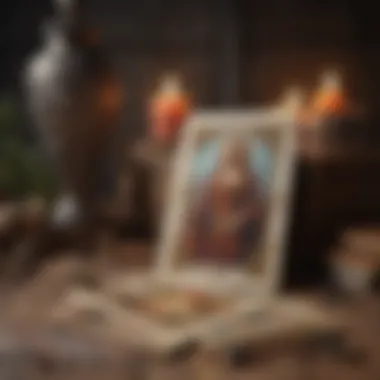
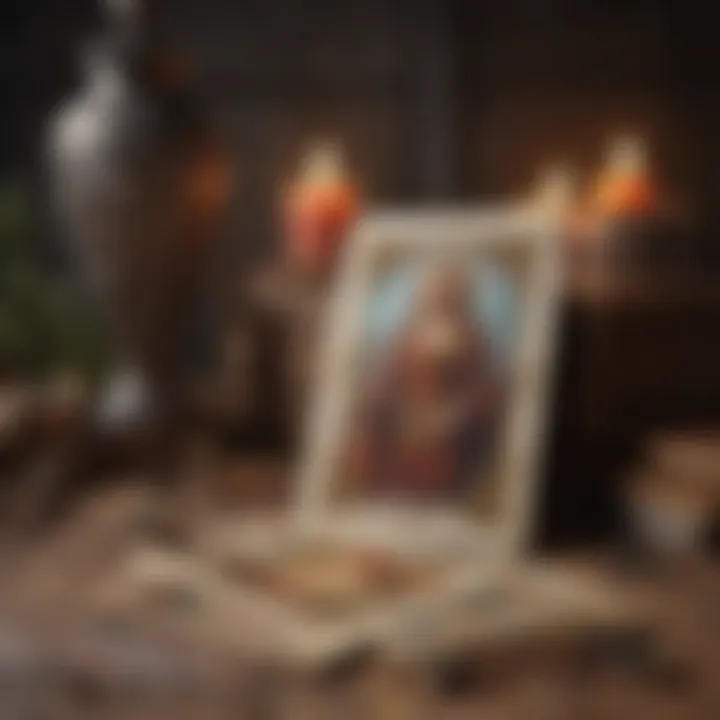
However, readers should be careful not to overload categories as too many options can lead to confusion. In this sense, understanding how to categorize questions doesn’t just enhance readability during interpretations; it also fosters a more personalized reading experience.
Assessing Suitability for Query
Assessing the suitability for the query is another fundamental aspect that bolsters the application of tarot formations. It involves considering the type of question and the desired outcome, which are pivotal in determining the most appropriate spread. The significant feature here is adaptability; each query may require a different spread for an effective exploration.
This approach brings awareness to the key characteristics of the querent's situation. For instance, a vague question may not benefit from a complex Celtic Cross Formation, which is structured for in-depth analysis. In contrast, a simpler spread like a Daily Draw can provide immediate insights without overwhelming the querent.
One notable advantage is that understanding the suitability allows readers to build confidence in their readings. However, the disadvantage lies in the possibility of overthinking. Sometimes, the simplest approach works best, and allowing one's intuition to lead could promote deeper understanding than strictly adhering to a systematic evaluation of suitability.
Tips for Effective Readings
Transitioning to effective tarot readings means cultivating an atmosphere and practice that promotes connection and understanding. Effective readings don’t just rely on the formation chosen; they also depend significantly on how the environment and engagement shape the querent's experience.
Creating a Conducive Environment
Creating a conducive environment plays a pivotal role in enhancing the overall reading experience. Factors such as lighting, silence, and even the presence of comforting objects can significantly impact how both the reader and querent feel during the session. The atmosphere can promote relaxation and openness, allowing intuition to surface more naturally.
It is beneficial, as certain environments can ease anxiety and encourage participants to communicate more freely, ultimately contributing to a richer reading. A unique feature here is the notion of ritual—something simple like lighting a candle or using specific music can transform the space, setting the tone for a more profound exploration.
The downside might be that not everyone has the luxury of a soft, quiet space available for readings. Still, even small adjustments—like clearing clutter or adjusting seating—can make a noticeable difference.
Engaging with Cards Meaningfully
Engaging with cards meaningfully signifies an essential aspect of tarot practice that determines the quality of the insights gleaned from each reading. This engagement includes active participation from both reader and querent, where the cards are not just laid out but are a medium through which both parties communicate.
It’s crucial for readers to connect personally with the cards, relying on intuition to guide interpretations rather than sticking rigidly to book meanings alone. This element allows flexibility and expression of unique insights, which can lead to richer understandings.
One unique aspect of this engagement is the concept of dialogue; when readers ask questions about the cards or encourage querents to express their feelings about the symbols, it can open up more exploration areas. The drawback, however, may lie in the risk of straying too far from core meanings of the cards, leading to confusion rather than clarity.
In summary, applying practical aspects of tarot formations leads to enriched readings and a deeper understanding of the intricate relationship between the reader and querent.
Understanding how to choose the right formation tailored to the specific inquiries not only enhances the clarity but also maximizes the effectiveness of the readings. Further, fostering a conducive environment and engaging meaningfully with the cards can truly transform the experience for both parties involved.
As the journey through tarot card formations continues, these practical applications truly bring the art of tarot into full bloom.
The Role of Intuition in Tarot Readings
Using tarot cards isn't simply about the mechanics of shuffling or the positions of the cards laid out. It's a path where the rational mind needs to step aside to allow deeper thoughts and feelings to surface. The intuitive component in tarot readings plays a critical role as it enhances clarity in interpreting the messages conveyed by the cards.
Intuition often bridges the gap between logic and the esoteric realms explored through tarot. Relying solely on learned meanings may constrain the reader, as this leads to ignoring the subtle whispers from one's inner self. The moment a reader taps into their gut feeling, they embrace a unique language that might speak to their query on a more personal and profound level.
Balancing Logic and Intuition
Logic is like a sturdy ship navigating through the stormy seas of readings. It equips a tarot reader with the foundational knowledge of structures—meanings of individual cards and their placements within various spreads. On the other hand, intuition is the wind filling the sails, propelling them forward. Striking a balance between these two elements can define a reading's success.
- Understanding Structures: A solid grasp of card meanings and contexts can ground the reader when they feel adrift.
- Trusting Your Instincts: Sometimes, the first impression upon seeing a card can be more insightful than textbook definitions.
- Flexibility is Key: If intuition nudges the reader toward a fresh interpretation, it might unveil a richer perspective.
Achieving this balance enables the reader to navigate readings with both clarity and creativity. By combining the teachings within the cards and their own feelings about them, readers can offer multifaceted insights to those who seek their guidance.
Cultivating a Personal Touch
Having a personal touch in tarot readings infuses them with warmth and allows for a deeper connection between the reader and those seeking answers. Everyone’s journey through life is unique; consequently, interpretations should also reflect that individuality. A reader who stitches in personal experiences or beliefs can foster a customized reading that resonates profoundly with the querent.
Here are some ways to nurture this personal touch:
- Reflect on Past Experiences: Show how similar situations unfolded in the reader's life, which provides relatability.
- Customize Spreads: Adapt traditional spreads to fit the nuances of a specific situation, creating a bespoke experience.
- Use of Symbolism: Incorporate personal symbols or metaphors when interpreting the cards, as these may hold significant meanings for the querent.
By weaving together intuition alongside a personal narrative, readers cultivate a reading that is not only enlightening but also resonates with the individual on a deeply emotional level.
It's the fusion of logical understanding, intuitive insight, and personal connection that often leads to truly transformative tarot readings.
Epilogue: The Significance of Tarot Formations
The significance of tarot formations cannot be overstated. They function as a bridge between the reader and the deeper layers of interpretation inherent in the tarot. Understanding these formations equips both novice and experienced readers with the tools needed to unveil insights that might otherwise remain buried beneath surface-level assumptions. The richness of tarot readings often lies not just in the individual cards but in the relationships and patterns that emerge from their arrangement.
When discussing the importance of tarot formations, it's essential to consider their varied benefits. For one, they foster a structured approach to readings. Instead of randomly picking cards with no clear intent, formations guide the reader’s focus, allowing for a more organized interpretation of the messages conveyed. This structure is particularly beneficial for navigating complex queries where multiple factors must be taken into account. It helps to establish a clear narrative, facilitating a deeper understanding of situations from different angles.
Additionally, tarot formations encourage intuitive engagement. They blend logical reasoning and emotional discernment, which facilitates a smoother flow of insights. Readings become more than just a list of card meanings; they transform into a cohesive story. Each formation, whether it is the classic Celtic Cross or the more intricate astrological spread, brings a unique lens through which to view personal challenges or aspirations.
"True understanding of tarot lies in the dance between the cards and the formation they create—this interplay unveils a profound narrative, speaking beyond mere words."
In the grand scheme, grasping the significance of tarot formations invites a more profound, enriched practice. It pushes the reader to look beyond a single card's meaning and to interpret the narrative woven through its placement. The formation often reveals hidden energies, motivations, and possible outcomes, serving as a mirror reflecting our inner landscapes.
Integrating Knowledge and Practice
Integrating knowledge and practice is vital for any tarot reader looking to deepen their craft. Knowledge about various formations is only half the equation; the real magic happens when this knowledge is applied in real readings. Engaging systematically with each formation's specific structure allows for mastery over time. This proactive approach enables readers to fine-tune their interpretations and adapt them to the unique questions posed by clients.
Readers are encouraged to set aside time for practice using different formations. This could involve doing readings for oneself or friends, utilizing various layouts to tackle an array of scenarios. Journaling these readings can also illuminate recurring themes or challenges. Over time, readers will notice that as they become more comfortable with specific formations, interpreting card meanings also becomes more intuitive. Practical application and reflective learning intertwine, reinforcing the bridge between theoretical understanding and practical execution.
Encouraging Continuous Learning
A crucial aspect of mastering tarot formations is the commitment to continuous learning. The tarot, much like life, is ever-evolving. New cards may gain interpretations and old patterns may shift in significance as cultural paradigms change. Keeping abreast with new literature, attending workshops, and engaging with devoted tarot communities can enhance one's understanding significantly.
Platforms such as Reddit and various Facebook groups offer spaces where readers can share insights, strategies, and experiences. Considering tarot as a lifelong study broadens one’s perspective and fosters resilience. The journey of learning never really ends, and it’s this perpetual quest for knowledge that facilitates deeper connections with both the cards and oneself. Moreover, adapting to an evolving practice ensures that readings remain relevant, rich, and enlightening.
In this way, tarot formations don’t just serve a functional purpose; they contribute to an ongoing transformation within the reader, weaving complexity into what might initially appear as simple card interpretations.







